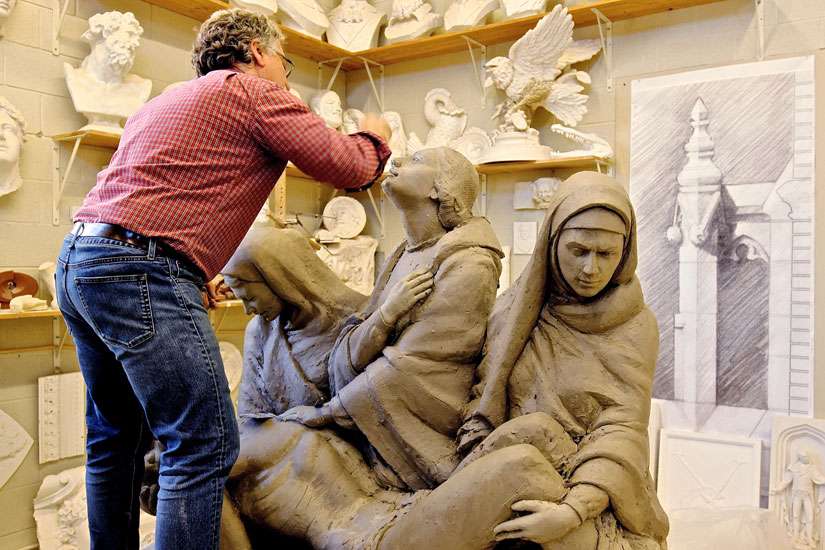The sacrifice of four of those sisters, who all died young, was recognized in the mid-1800s when they were laid to rest not far from Bishop Michael Power in the crypts beneath St. Michael’s. Now, as part of the cathedral’s overall renovations, their resting places have been renovated to honour and pay lasting tribute to their sacrifice.
“The sisters endured much hardship to provide the opportunity for girls and young women in the city to get an education,” said Sr. Juliana Dusel, archivist for the Institute of the Blessed Virgin Mary’s Loretto Abbey in Toronto.
Five Loretto sisters arrived in Toronto on Sept. 16, 1847 in response to a request from Bishop Power, who sought Catholic teachers for the city’s girls. The sisters represented the first religious community in the new diocese of Toronto. Unfortunately, their ship landed as Bishop Power was caught up in a typhus epidemic ravaging the city, so no accommodation was ready for them. Arriving at the bishop’s residence they were told he was unavailable and were sent away, finding shelter from a benefactor. Within two weeks, the bishop had contracted typhus and died. He was buried in a crypt beneath the altar of his unfinished cathedral.
Life for the sisters in Toronto was hard. Yet they immediately set to work. In order to educate as many students as possible, the sisters set up two different types of schools: free schools for families unable to pay tuition (the forbearer of Ontario’s publicly funded separate school system), and the city’s first boarding schools for more affluent families, despite an economy weighed down in a depression that meant few parents could afford the cost of tuition.
The sisters arrived unprepared for Canadian winters. Unable to afford proper winter attire, they wore the light shawls and shoes brought from Ireland. They lived in modest homes that lacked wood stoves and, in any event, they had no money to fuel a fire. They were more concerned with providing food and warmth for their students. As a result, the sisters were prone to sickness.
In April 1849, barely 19 months after arriving in Toronto, Sr. Bonaventure Phelan died from consumption, her illness worsened by malnutrition and exposure to the cold. She was 32. Her body was buried in a crypt in the year-old cathedral.
Sr. Gertrude Fleming is recognized as the first teacher in what would become the Catholic (separate) school system in Ontario. During the winter she would walk through snow from the convent to a school set up for impoverished children near the cathedral. The daughter of a Dublin physician, she would often arrive at school with her feet nearly frozen. She contracted tuberculosis and, when gangrene developed, her right foot was amputated, without anesthesia. She lived for a short while after that but tuberculosis finally took her life on Christmas Day, 1850, at age 29.
Less than three months later, Sr. Ignatia Hutchinson, 32, died after a three-year battle with the same disease. She was the third Loretto sister from among the original five who knocked on Bishop Power’s door three-and-a-half years earlier to die while in service to the Catholics of Toronto. All three are buried in the crypt.
A fourth Loretto, Sr. Magdalen Shea, who died of heart disease, was buried in the crypt in 1853. Sr. Shea, however, was not from Ireland but was a vocation from Upper Canada.
According to Sr. Dusel, the four sisters were greatly admired in the young city, even by the Protestants. They unselfishly served others, sacrificing their own well-being to do so, particularly as they made education of impoverished children a priority.





























